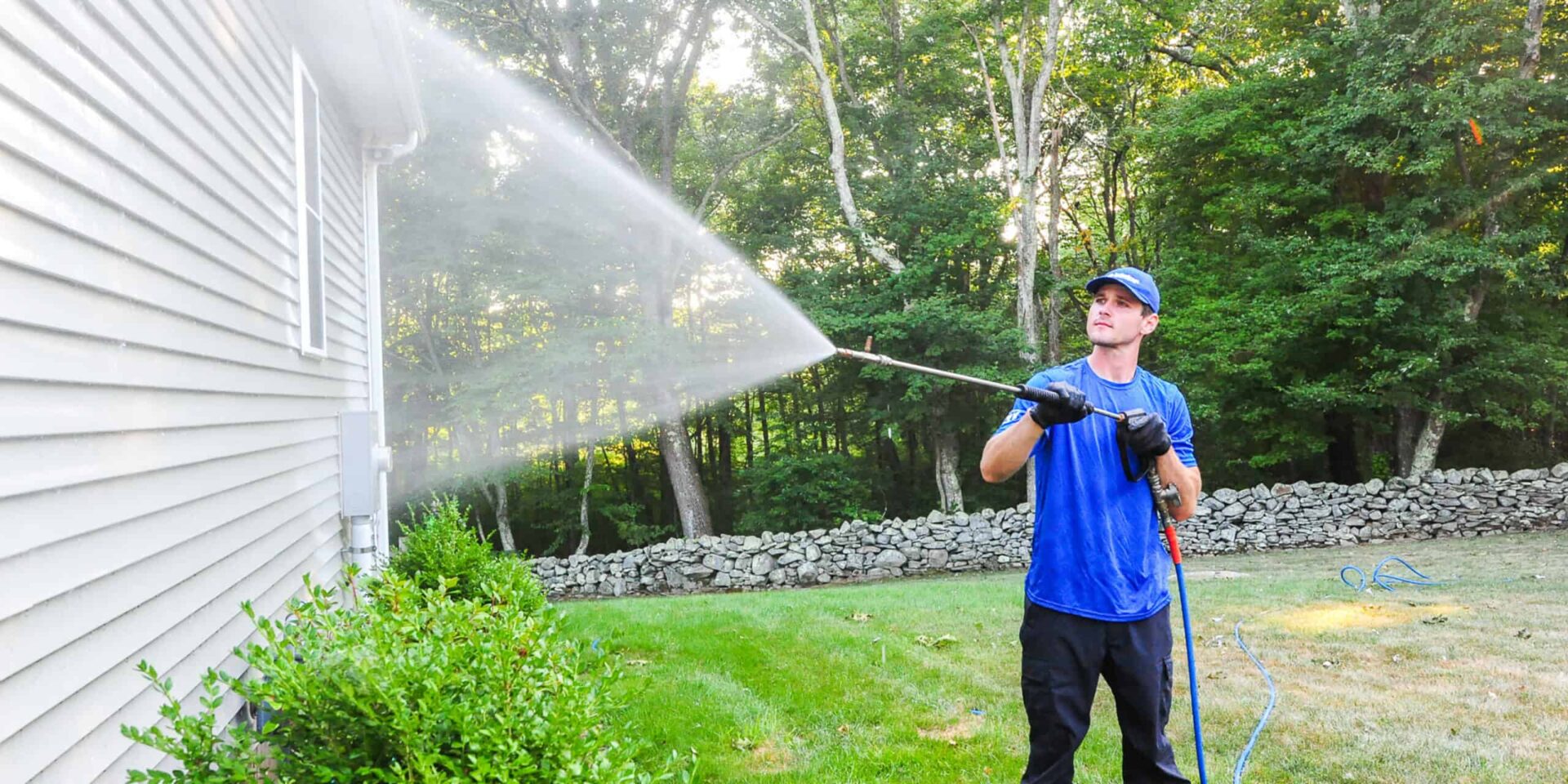When it comes to cleaning exterior surfaces, two popular methods often come into play: soft washing and pressure washing. Both techniques have their merits, but they serve different purposes and are suited to specific applications. In this article, we will explore the differences between soft washing and pressure washing, helping you decide which method is right for your cleaning needs.
Soft Washing: The Gentle Approach
Soft washing is a low-pressure cleaning method that relies on a combination of eco-friendly cleaning solutions and a gentle rinse. It is particularly well-suited for delicate surfaces, such as painted surfaces, siding, roofs, and more. Here’s why you might choose soft washing:
1. Safety for Delicate Surfaces:
Soft washing is ideal for surfaces that can be easily damaged by the high-pressure water used in traditional pressure washing. The low-pressure rinse and the use of specialized cleaning solutions make it a safer option for painted surfaces and roofing materials.
2. Long-Lasting Results:
Soft washing not only removes contaminants like algae, mold, and mildew, but it also helps prevent their return. The cleaning solutions used inhibit the growth of these contaminants, keeping your property cleaner for an extended period.
3. Eco-Friendly:
Soft washing relies on biodegradable, environmentally friendly cleaning solutions. These solutions pose no harm to the environment, making soft washing a responsible choice for cleaning.
Pressure Washing: The Powerhouse Cleaning
Pressure washing, on the other hand, is a high-pressure cleaning method that uses the force of water to remove stubborn contaminants, such as dirt, grease, and grime. It is typically used on more durable surfaces and for heavy-duty cleaning tasks. Here’s when you might opt for pressure washing:
1. Tough Contaminants:
Pressure washing is highly effective in removing stubborn, deeply ingrained dirt, oil, or grease from surfaces like driveways, concrete patios, and brick walls. It’s the go-to choice for heavy-duty cleaning.
2. Speed:
Pressure washing is generally faster than soft washing. If you need a quick, efficient cleaning solution for large, durable surfaces, pressure washing is the way to go.
3. Preparation for Painting or Repairs:
Before painting, sealing, or making repairs to a surface, pressure washing can ensure a clean, debris-free surface, providing better adhesion for coatings or repairs.
Making the Right Choice
The choice between soft washing and pressure washing ultimately depends on the specific cleaning needs of your project:
- Choose Soft Washing if you need a gentle, surface-friendly cleaning method for delicate surfaces like painted walls, roofs, or sidings. It’s also the go-to option if you want a longer-lasting, eco-friendly solution.
- Choose Pressure Washing when you need a powerful cleaning method for tough contaminants, quick results, or preparation for other treatments like painting or repairs. Pressure washing is best suited for durable surfaces like concrete, brick, and stone.
In conclusion, both soft washing and pressure washing have their unique strengths and applications. Understanding the differences between the two will help you make the right choice for your cleaning project. Whether you need a gentle touch or a powerful blast, there’s a method to suit your specific cleaning needs.

